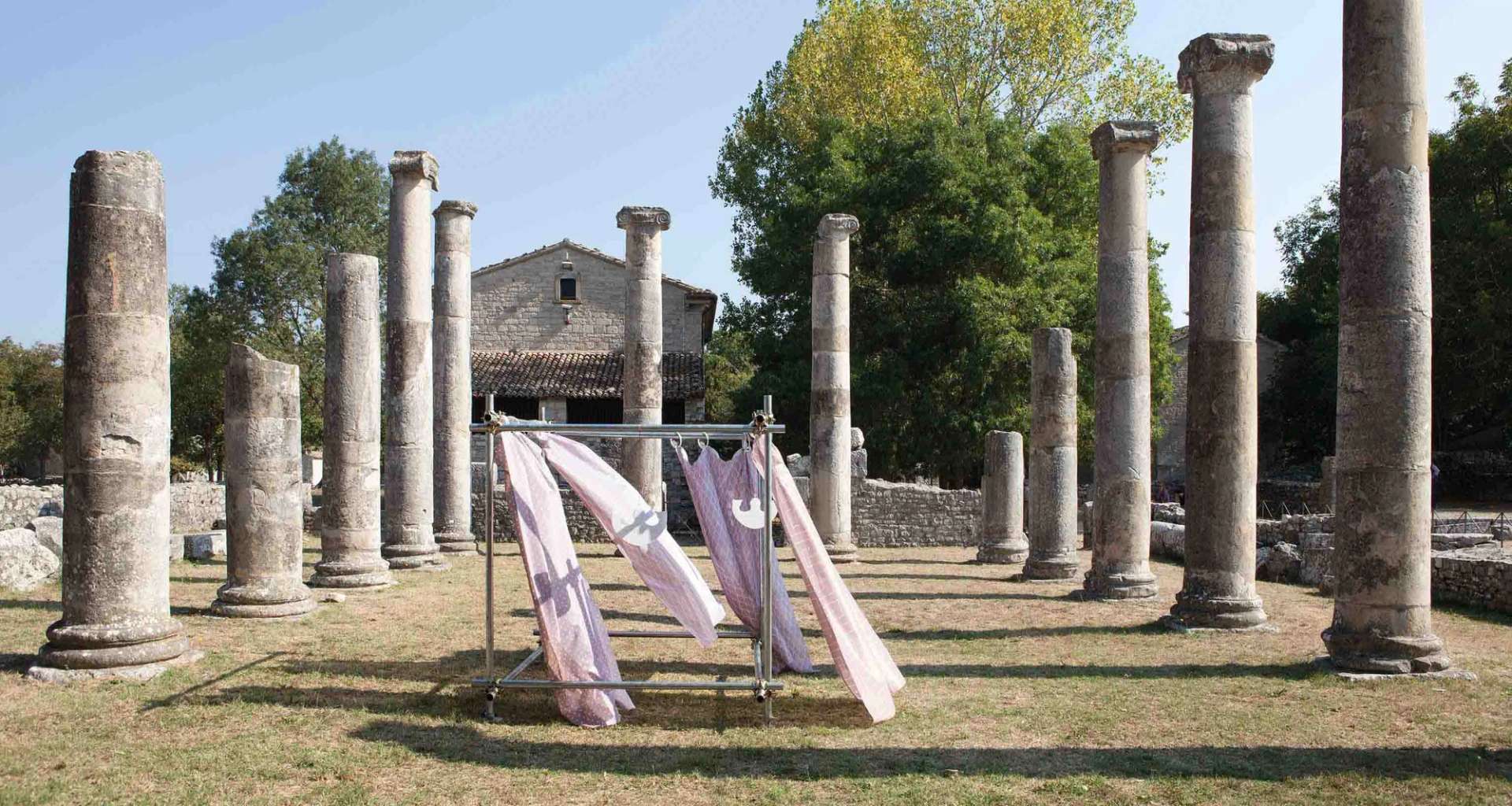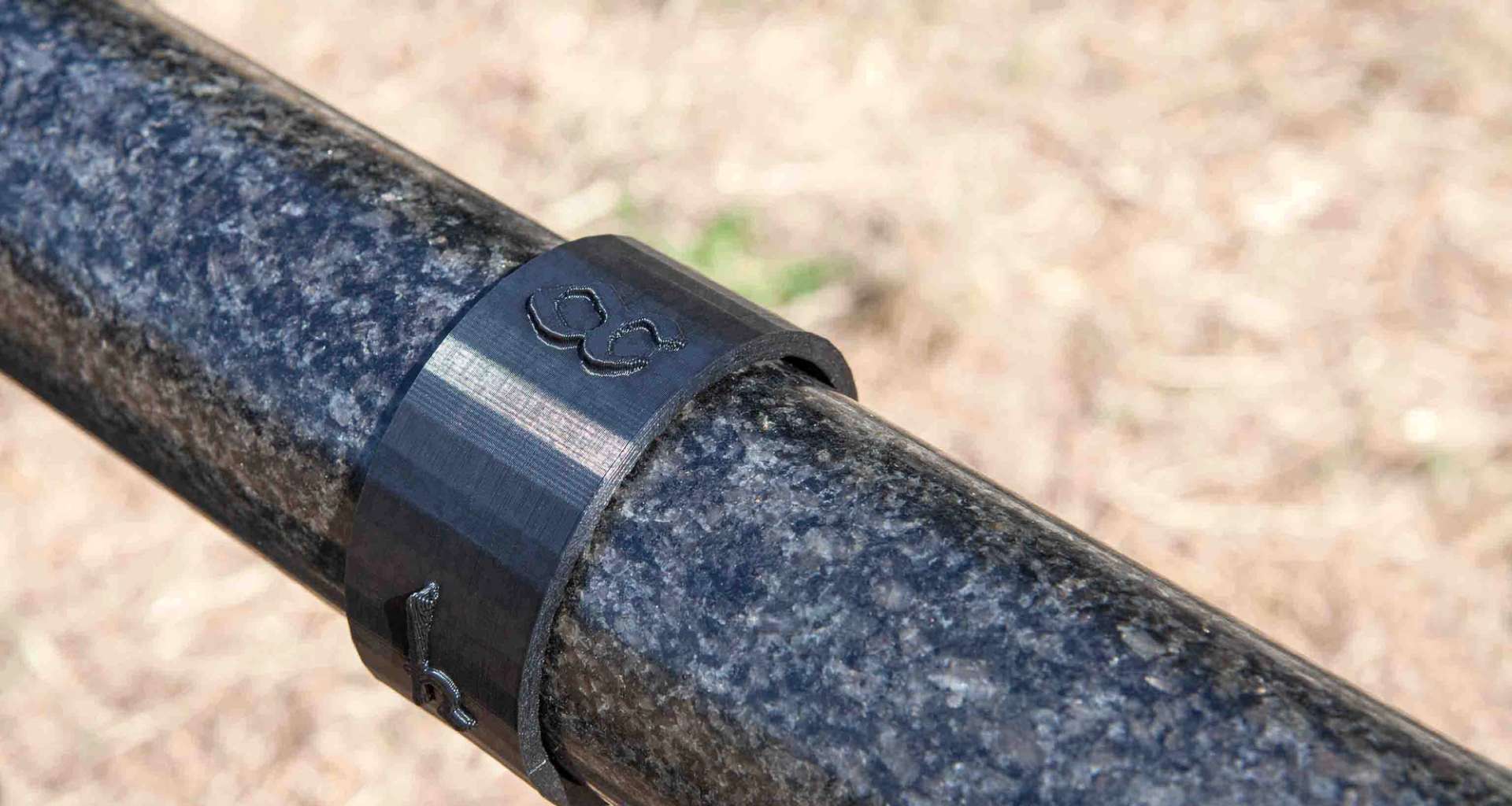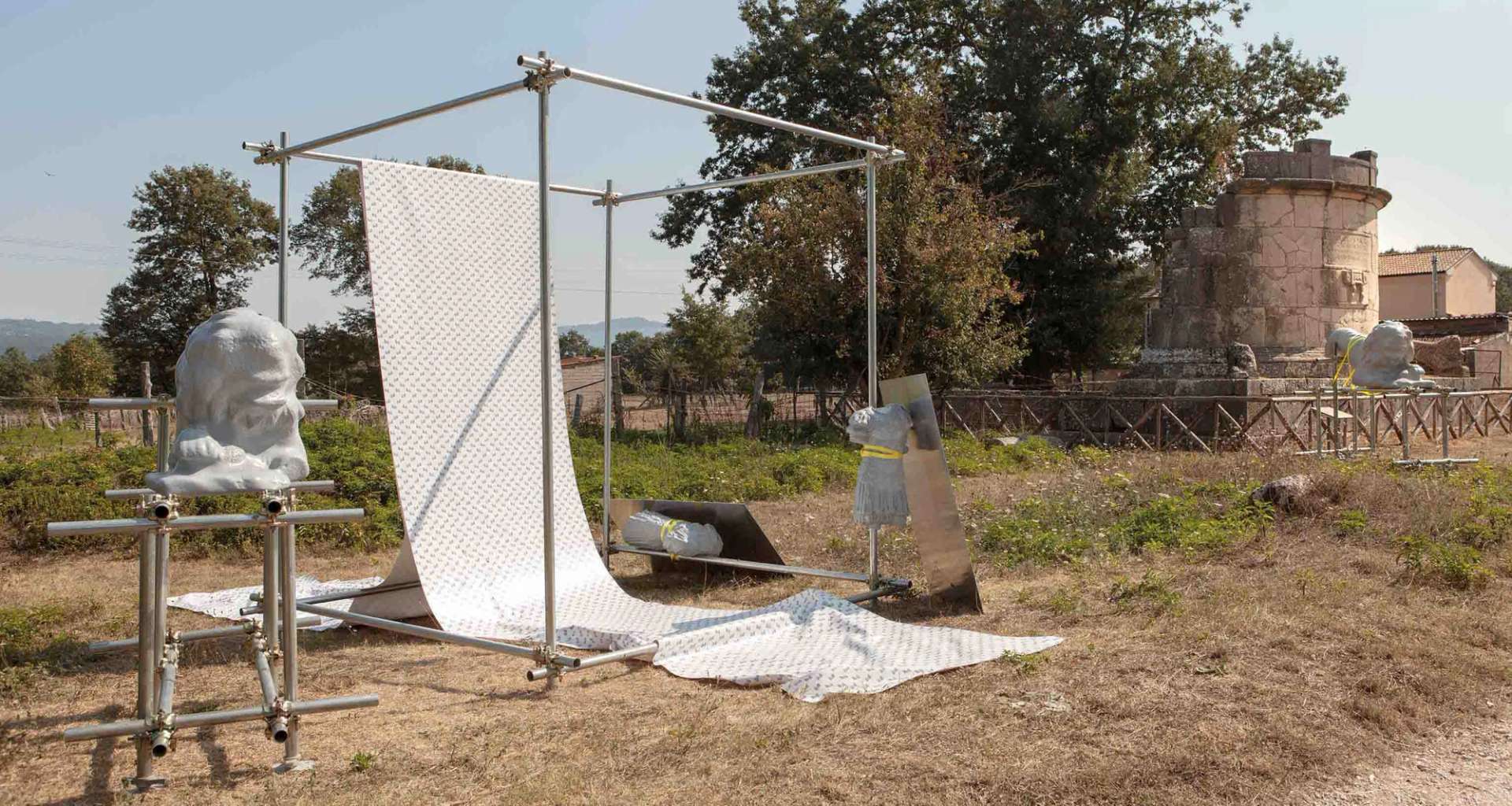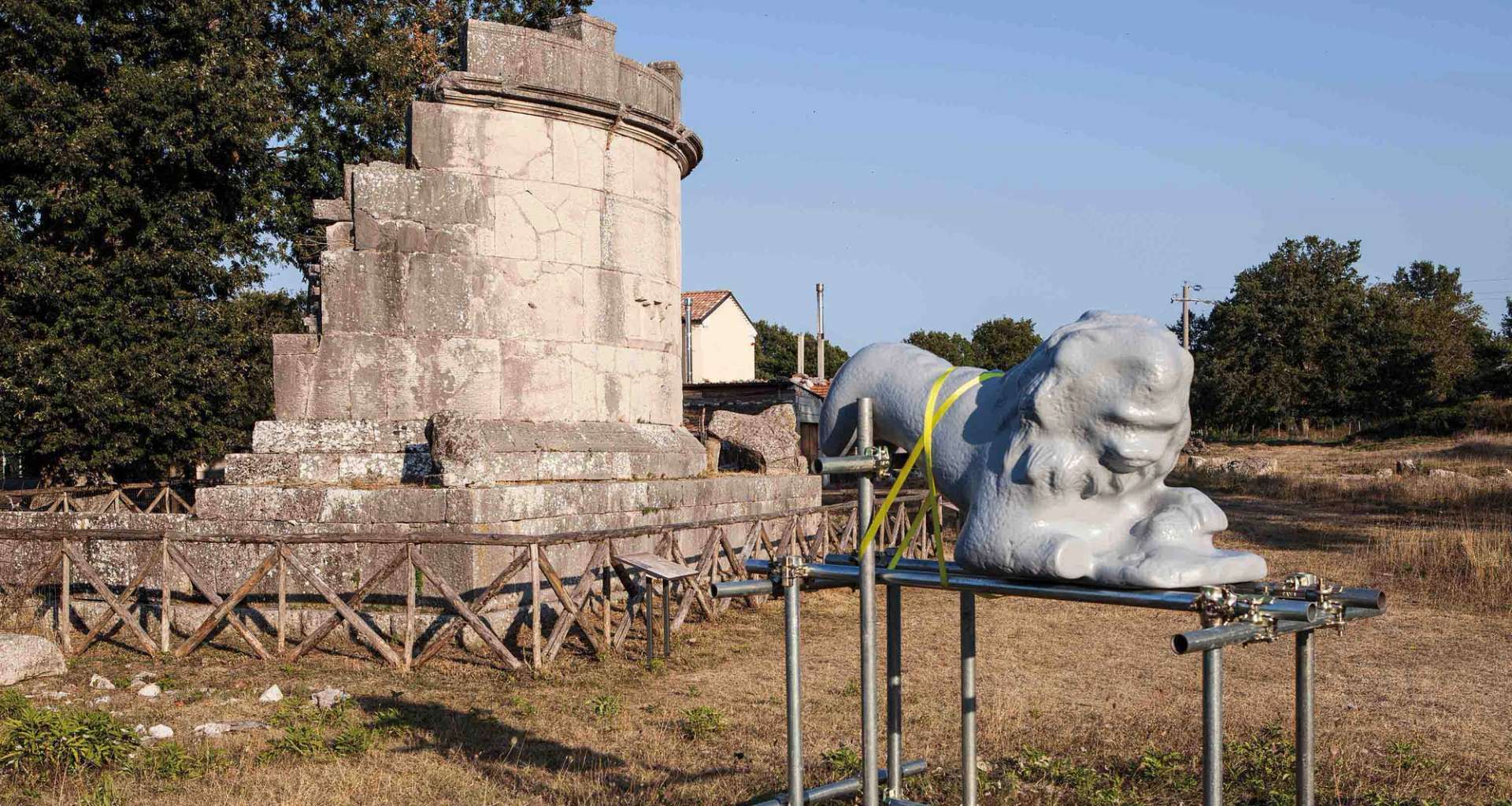Inspired by the archaeological park of Saepinum, “spolia” investigates the relationship between history and archeology in an attempt to give a voice to the vanquished, not only through the partial story of the winners, but through archeology, which tells us about their culture and their civilization. A relationship, that between winners and losers, which fades into historical events. On one hand, Pozzato’s investigation made use of written sources, activated by discussions with scholars and archaeologists. On the other, he made use of the territory itself: a mountainous landscape rich in woods and dotted with ancient sanctuaries and fortified cities. Four of Pozzato’s installations are located on the lawn in front of Porta Bojano, inside the basilica, the house with the impluvium, and the mausoleum of Ennio Marso. The materials used recall the techniques of contemporary archeology; sheets of non-woven fabric, Innocenti tubes of the scaffolding and supports, metal materials, bronze, and 3D printed artifacts. In addition, large photographic prints will be hung on the balconies of the houses in the village.
MY RESEARCH PURSUES THE MEMORY OF DEFEAT, I FOCUS ON WHAT HAS SURVIVED, ON THE ARCHEOLOGY OF THE REMAINS, INTERRUPTING THE MARGINALIZATION OF THE VANQUISHED THAT THE HISTORY OF THE VICTORIOUS TENDS TO HIDE
The work of Francesco Pozzato (Vicenza, 1992) focuses on the analysis of the relationship between matter and history, between three-dimensionality and temporality, and more specifically on the relationship between raw materials and the historical period called Antiquity. According to the artist, in fact, the past of humankind has had a profound influence on contemporary peoples. Society, especially Western society, has undergone radical changes over the course of history, characterized by ever greater acceleration. Pozzato’s artistic research stems from a reflection on this dualism, in an attempt to understand how the Ancient, which has apparently disappeared, can interact with the Contemporary and vice versa.
INSPIRED BY THE ARCHAEOLOGICAL PARK OF SAEPINUM, “SPOLIA” INVESTIGATES THE RELATIONSHIP BETWEEN HISTORY AND ARCHEOLOGY IN AN ATTEMPT TO GIVE A VOICE TO THE VANQUISHED, NOT ONLY THROUGH THE PARTIAL STORY OF THE WINNERS, BUT THROUGH ARCHEOLOGY, WHICH TELLS US ABOUT THEIR CULTURE AND THEIR CIVILIZATION
Sepino lies on a hill at an altitude of about 700 meters: it is one of the last north-eastern offshoots of the Matese massif, a territory that contains centuries of history of the pristine valley of the Tammaro river, rich in healthy springs and centuries-old woods. Elements of historical and naturalistic interest coexist in the village of Sepino: its main attractions include the archaeological site of the ancient Roman city – well preserved – of Saepinum, the medieval village, the landscapes of the Pianoro di Campitello and the whole mountain.







